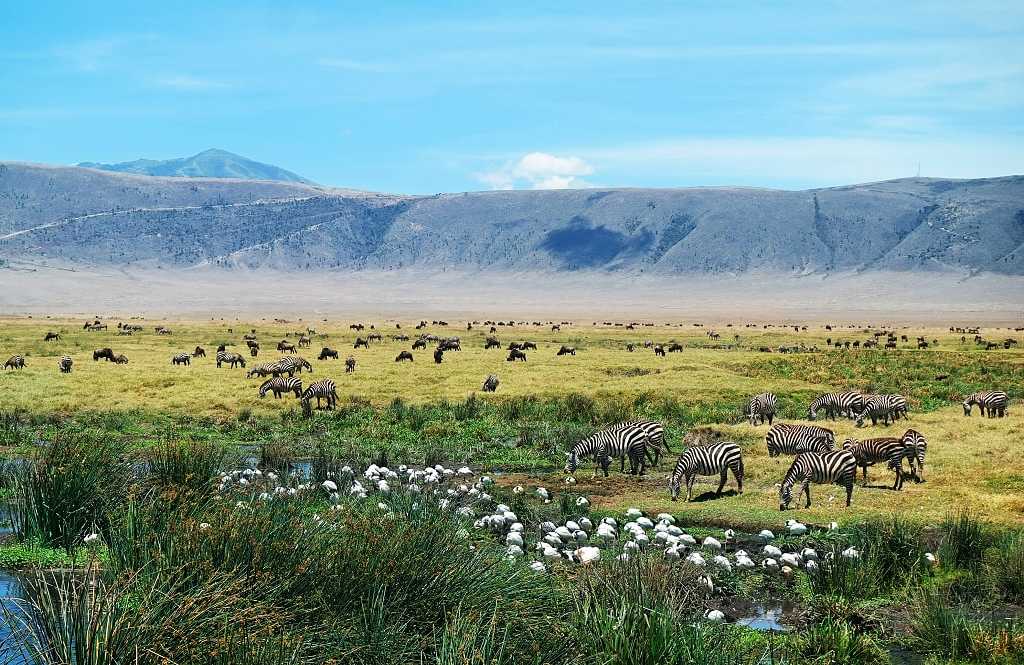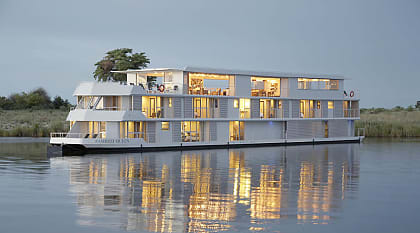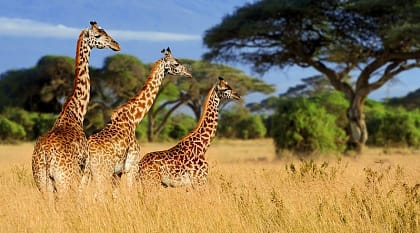Understanding an African habitat is essential to understanding the luxury safari itself. The landscape is not merely a backdrop, but the primary force that dictates what you will see and how you will see it. Many species are specialists, having evolved to flourish within a specific environment, while others are adaptable generalists, like lions, which are as adept at hunting in dense woodlands as they are on open plains. Each habitat presents a unique set of rules for survival, shaping the behavior of every creature within it.
Beyond the wildlife, each habitat is laced in its own visual superlatives that define the intimacy of the experience. An open landscape, like a shimmering salt pan or an ocean of grass, offers grand, sweeping views where wildlife is spotted from afar. Conversely, closed habitats like tangled forests are more challenging, demanding you move slowly and use your senses to unravel nature’s camouflage. This often results in impossibly close and personal encounters.
- Wildlife Distribution: Understand why certain animals are specialists, found only in one type of environment.
- Animal Behavior: See how adaptable predators like lions change their hunting strategies to suit different terrains.
- Visual Superlatives: Appreciate each landscape for its unique beauty, from blinding salt pans to tangled forests.
- Viewing Experience: Choose between the vast, open vistas of the plains or the intimate, hidden encounters of the forest.
- Safari Pacing: Learn how the terrain dictates the pace of your safari, from quick drives to slow, patient tracking.
For a deeper understanding of how to match your interests with the right environments, explore Zicasso’s comprehensive African safari travel guide.








